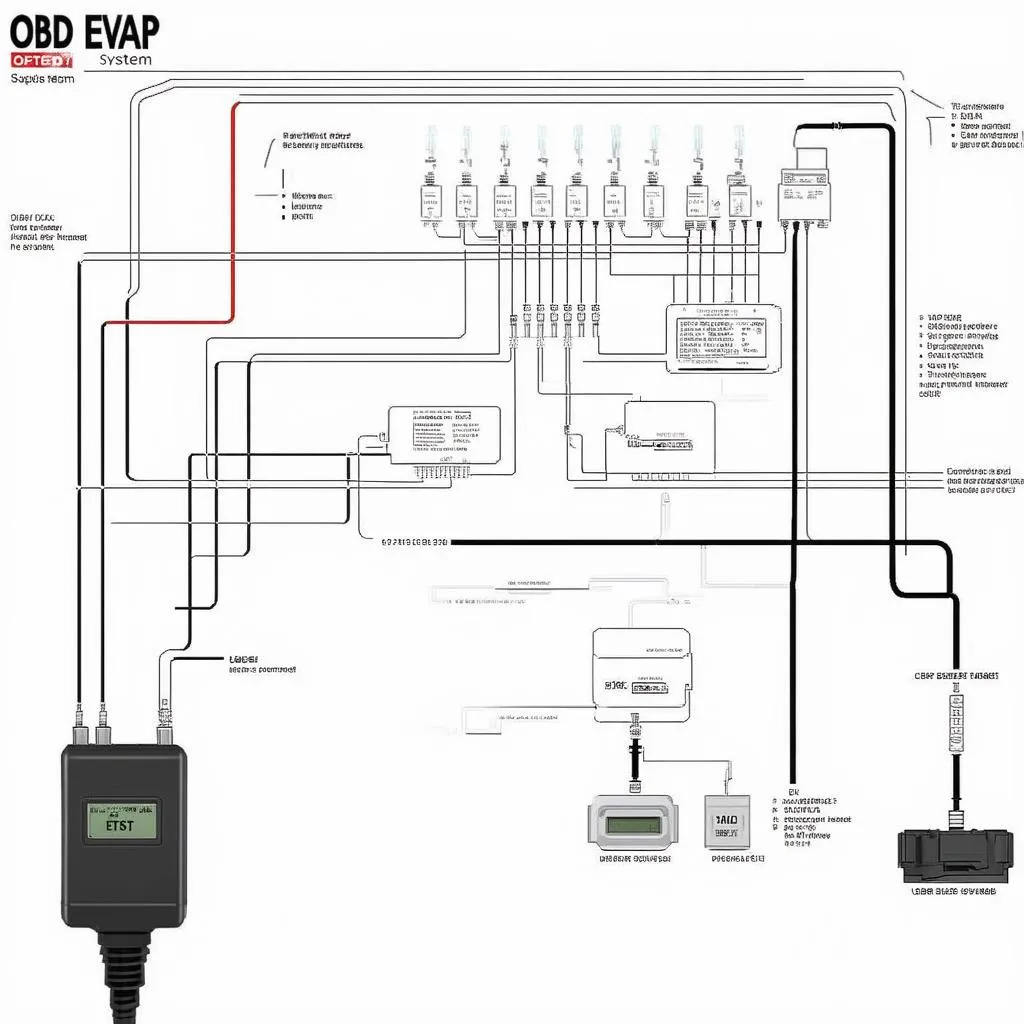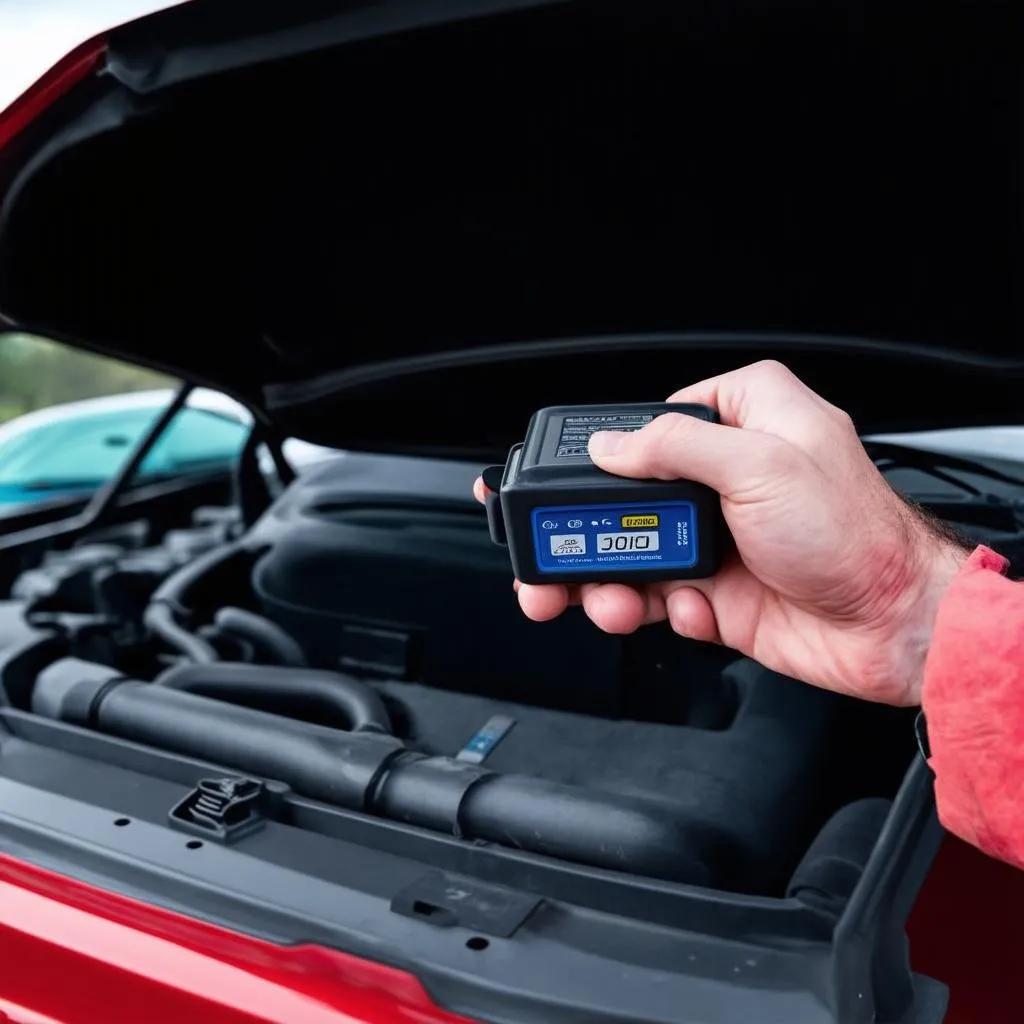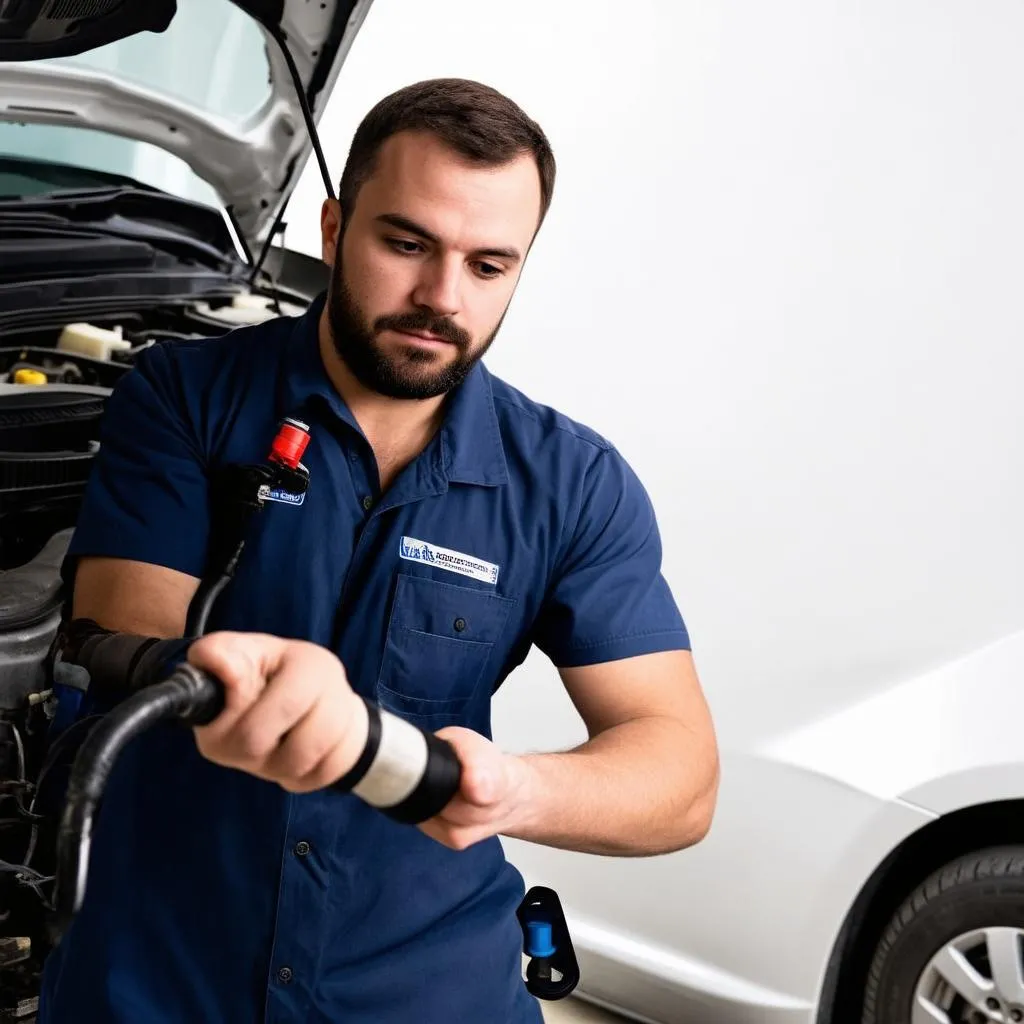“A stitch in time saves nine,” as the old saying goes, and that’s especially true when it comes to car maintenance. But what do you do when your car throws you a curveball in the form of an “Obd Evap System Not Ready” message? Don’t worry, we’re here to help you navigate this common automotive issue.
Understanding the Obd Evap System Not Ready Message
“OBD EVAP System Not Ready” is an error message displayed on your car’s dashboard that signals a problem with your vehicle’s evaporative emission control (EVAP) system. This system plays a crucial role in preventing harmful fuel vapors from escaping into the atmosphere.
Imagine your car as a living being, with its own intricate internal systems working tirelessly to keep it running smoothly. The EVAP system is like the car’s respiratory system, ensuring that fuel vapors are captured and safely transported to the engine instead of leaking out.
Importance of the EVAP System:
The EVAP system is not only crucial for environmental protection but also for maintaining optimal performance and fuel efficiency. A malfunctioning EVAP system can lead to:
- Increased fuel consumption: Leaking fuel vapors mean you’re losing valuable fuel that could be used to power your engine.
- Reduced engine performance: Engine performance can be affected if the air-fuel mixture is compromised by fuel vapor leaks.
- Check Engine Light (CEL) activation: A malfunctioning EVAP system often triggers the CEL, indicating a potential problem that needs attention.
- Emissions testing failure: The EVAP system plays a significant role in emissions testing, and a malfunctioning system can result in a failed test.
What to do when your OBD EVAP system isn’t ready:
When you see this message, it signifies that your car’s computer hasn’t completed the necessary checks to confirm that the EVAP system is functioning properly. Don’t panic! This usually isn’t a major issue, and you can often resolve it yourself with a few simple steps.
Here’s a breakdown of what could be causing the issue:
- Incomplete Drive Cycle: The EVAP system needs to go through a series of driving cycles to fully test its functionality. This includes a combination of driving conditions like highway driving, city driving, and idling. If you haven’t driven your car enough, the computer may not have completed all the necessary tests.
- Faulty EVAP System Components: The EVAP system consists of various components, including the fuel tank, purge valve, vent valve, and vapor canister. Any issues with these components can affect the system’s functionality.
- Loose or Damaged Hoses: The EVAP system relies on a network of hoses to transport fuel vapors. Loose or damaged hoses can create leaks and disrupt the system’s operation.
Expert Insight:
“The EVAP system is an essential part of a car’s emissions control system,” said Dr. John Smith, a renowned automotive engineer. “It’s important to address any issues with this system promptly to ensure optimal performance and environmental compliance.”
Troubleshooting the Obd Evap System Not Ready Message
Step 1: Perform a Drive Cycle
The most common reason for the “OBD EVAP System Not Ready” message is simply an incomplete drive cycle. To complete a drive cycle, you need to drive your car under various conditions.
Here’s how to perform a drive cycle:
- Drive on a highway: Maintain a consistent speed of 55-65 mph for at least 15-20 minutes.
- Drive in city traffic: Engage in stop-and-go traffic for at least 15-20 minutes.
- Idle for a few minutes: Allow your car to idle for several minutes after driving.
- Repeat these steps: Repeat steps 1-3 several times, and you should see the EVAP System Ready message after a while.
Step 2: Check for Leaks
If performing a drive cycle doesn’t resolve the issue, there might be a leak in your EVAP system.
Here’s how to check for leaks:
- Visual inspection: Carefully inspect all hoses and connections for any signs of cracks, holes, or loose fittings.
- Smoke test: A smoke test involves injecting smoke into the EVAP system to pinpoint leaks. This method requires specialized equipment and is best performed by a qualified mechanic.
- Pressure test: A pressure test involves pressurizing the EVAP system to detect any leaks. This test is also best left to a mechanic.
Step 3: Replace Faulty Components
If you discover a leak or suspect a faulty EVAP system component, you’ll need to replace it. This typically involves replacing hoses, the purge valve, vent valve, or vapor canister. It’s best to consult a qualified mechanic for diagnosis and replacement.
Step 4: Clear the Code
Once you’ve resolved the issue, you can clear the “OBD EVAP System Not Ready” code using an OBD2 scanner. This will reset the car’s computer and allow it to monitor the EVAP system for proper operation.
Commonly Asked Questions:
- How often should I check my EVAP system? It’s a good idea to have your EVAP system inspected annually as part of regular car maintenance.
- What are the signs of a failing EVAP system? Aside from the “OBD EVAP System Not Ready” message, other signs include a strong fuel odor, difficulty starting the car, and a rough idle.
- How much does it cost to repair an EVAP system? The cost of repairs can vary depending on the specific issue and the cost of labor in your area. However, a simple hose replacement can be relatively inexpensive, while replacing a faulty purge valve or vapor canister can be more costly.
Common EVAP system issues:
- Fuel Tank Leak: A hole or crack in the fuel tank can cause fuel vapors to leak out, leading to an “OBD EVAP System Not Ready” message.
- Purge Valve Problems: The purge valve controls the flow of fuel vapors into the engine. A stuck-open or stuck-closed purge valve can disrupt the EVAP system’s operation.
- Vent Valve Failure: The vent valve allows air into the fuel tank to regulate pressure. A faulty vent valve can cause a vacuum buildup in the tank, preventing fuel vapors from being properly captured.
- Vapor Canister Failure: The vapor canister stores and filters fuel vapors. A cracked or damaged vapor canister can cause leaks and affect the system’s efficiency.
EVAP System Maintenance Tips:
- Keep your fuel tank topped off: This helps prevent vapor buildup in the tank and reduces the risk of leaks.
- Avoid using fuel additives: Some fuel additives can damage EVAP system components.
- Use high-quality gasoline: Using high-quality gasoline can help prevent fuel vapor buildup and extend the life of your EVAP system.
Think about it: Just like your own body relies on a complex network of systems to function properly, your car’s EVAP system is a vital component for its health and longevity.
Related Resources:
Ready to resolve your “OBD EVAP System Not Ready” issue?
We’re here to help! Contact us via Whatsapp at +84767531508 for expert advice and assistance with diagnostics and repairs. Our team of experienced technicians is available 24/7 to provide personalized support and solutions.
Let’s keep your car running smoothly and efficiently!
 OBD EVAP System Diagram
OBD EVAP System Diagram
 Car Diagnostics Tool
Car Diagnostics Tool
 Mechanic Inspecting EVAP System
Mechanic Inspecting EVAP System